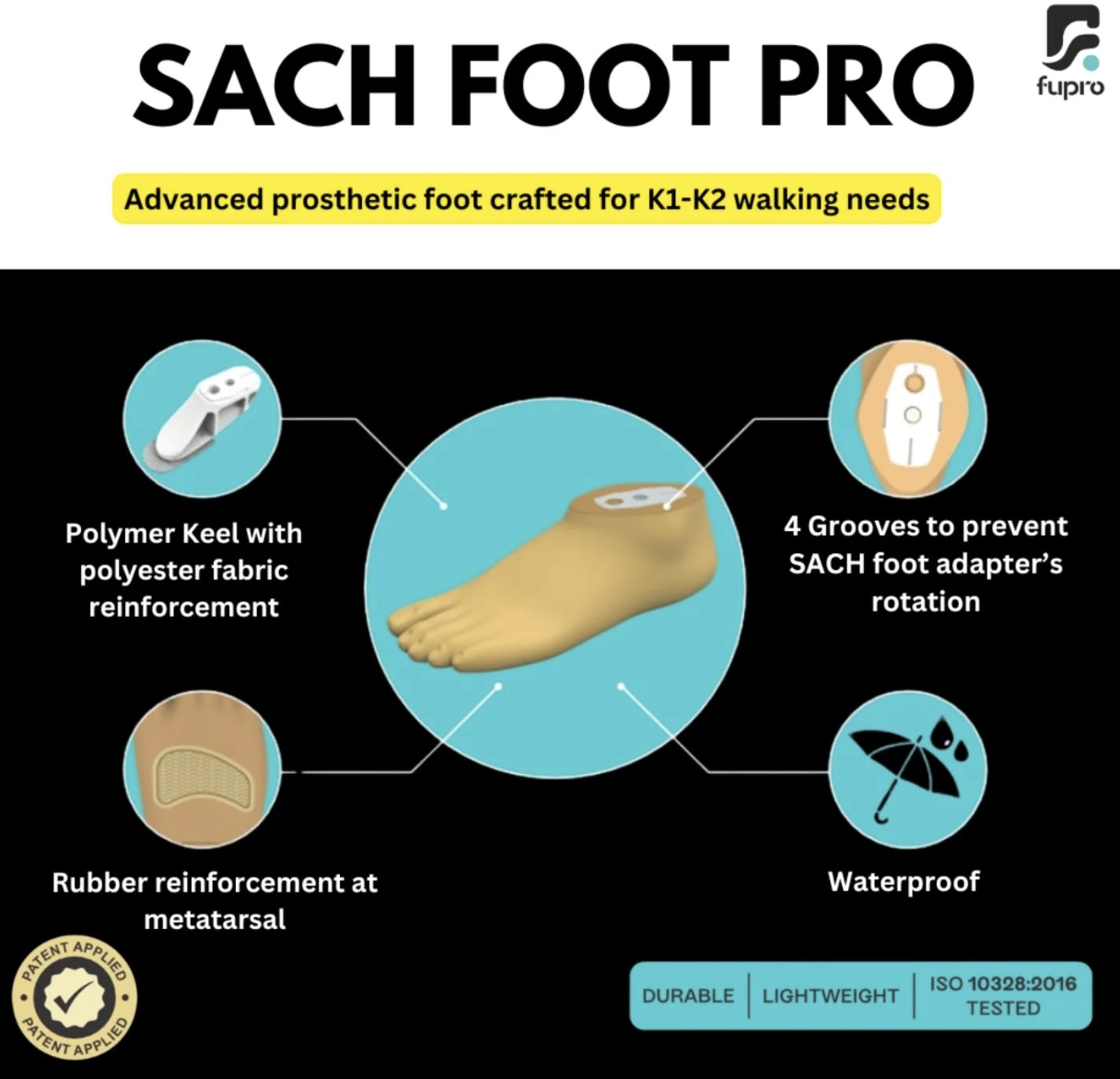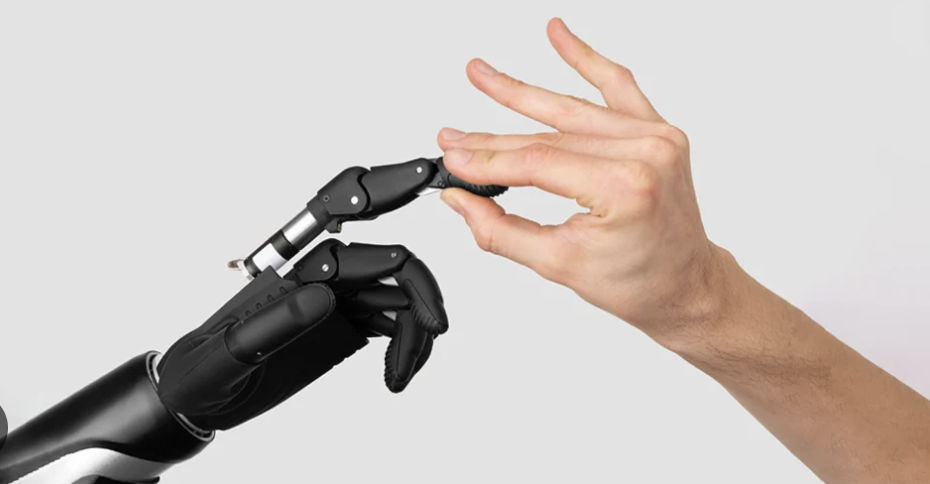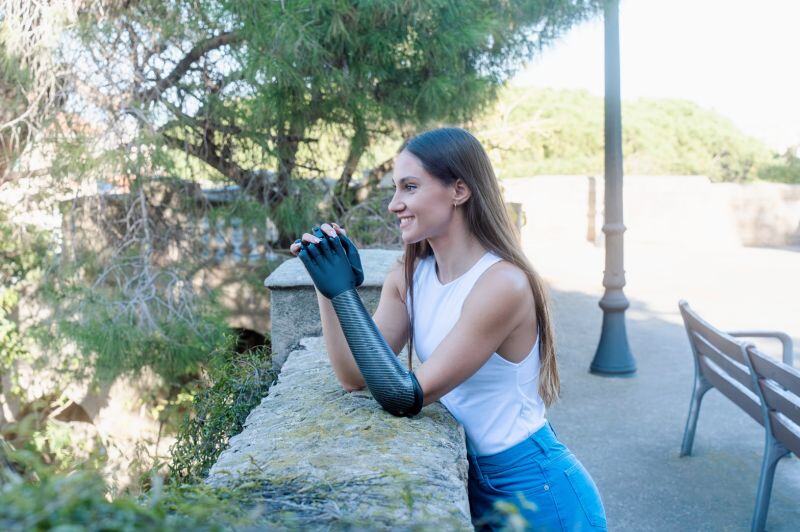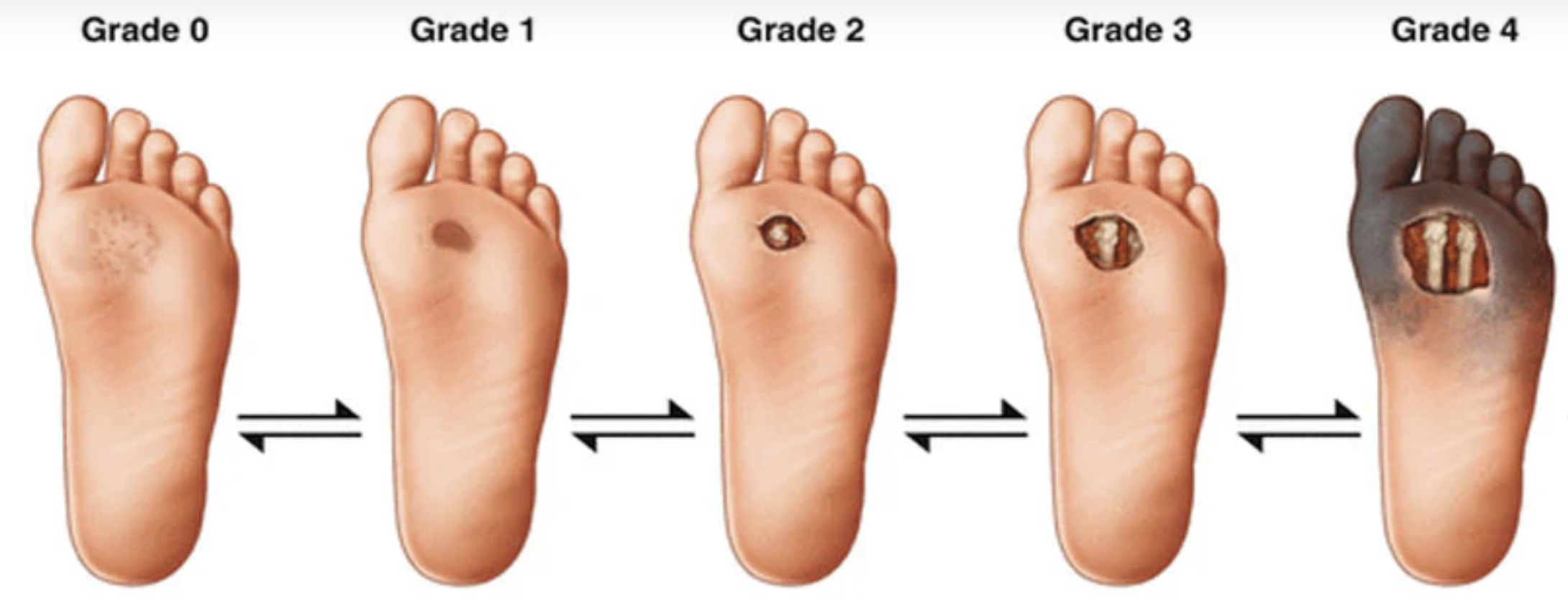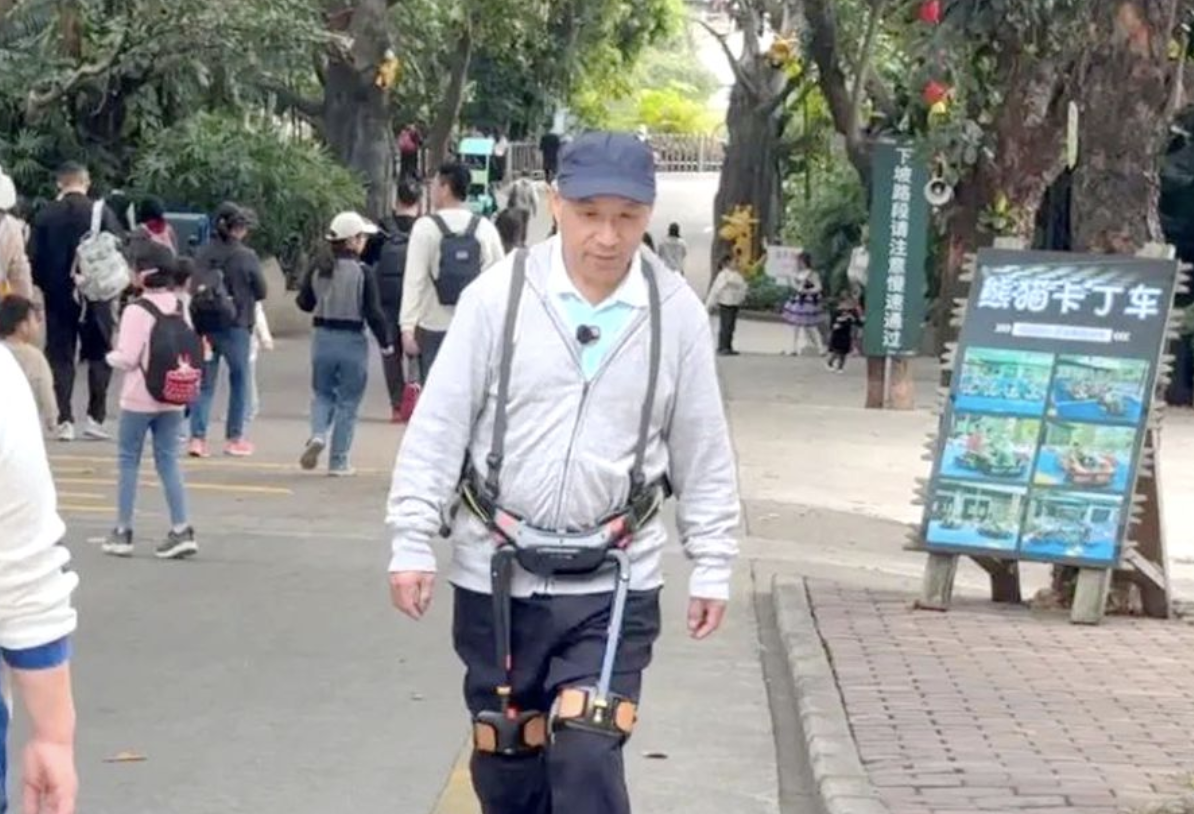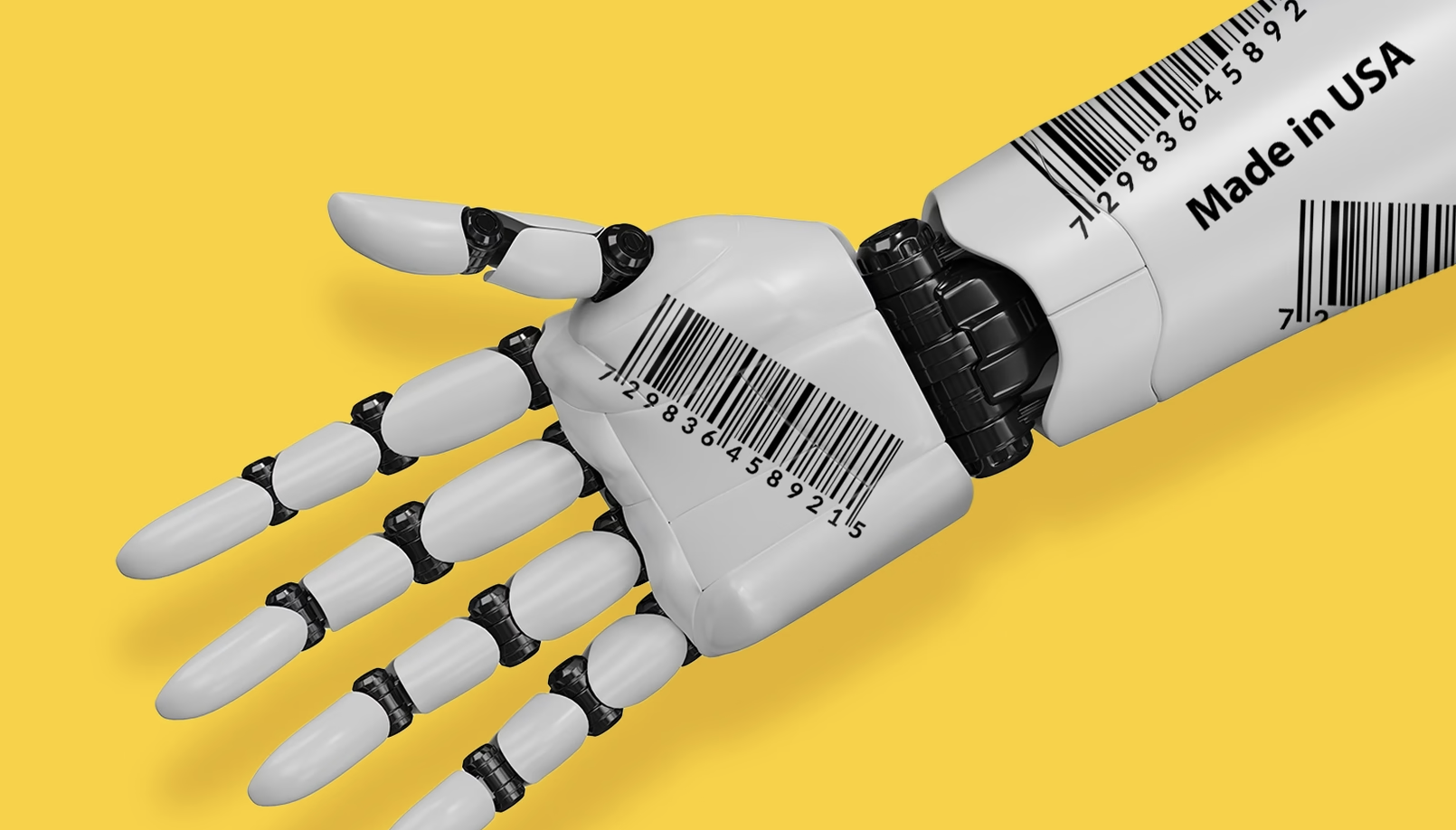In 2019, a symposium at the San Diego AOPA National Assembly entitled “Getting a Grip on Multi-articulating Hands" was led by MacJulian Lang, CPO/FAAOP; Kerstin Baun, OTR/L, MPH; and myself, Karl Lindborg CPO/LP, highlighting the leading multi-articulating hands (MH) available to clinics and amputees in the US marketplace. Ossur’s i-Limb hand, Taska’s Gen2 hand, and ottobock’s bebionic hand were featured as the leading players.
The panel in 2019 Honorably Mentioned: Vincent Hand (Germany); Hy5’s hydraulic MyHand (Norway); Covvi’s Nexus hand (England); two US based hands - the Ability Hand by Psyonic, Mobius Bionics’ LUKE hand; and finally, Open Bionics’ Hero Arm (England). These hands or arm systems did not make the cut for review, either because there was no formal US distribution, or they were only recently launched and there was not enough information available to fairly compare and review.
Fast forward to 2024, new MH players are entering the US market: Covvi’s Hand (England); Aether Medical’s Zeus Hand (Poland); and, BionIT Labs’ Adams Hand (Italy). Manufacturer names such as BrainRobotics, Esper, Rebel Bionics and Prensilia are knocking at the door, while a few other upstart companies have vanished entirely from the market.
In this article, we will offer a current MH comparison for the US market with perspectives on coding, marketing, and clinical choice.
A total of eight MH are now available in the US market. (In addition, while the Michaelangelo hand is available, it is a multi-functioning hand rather than an MH.) (Another exception, the Mobius Bionic Luke Arm has an MH as part of its unit but is not sold separately so is not included here.) The following, condensed, chart compares multi-articulating hands currently available in the US:

Product Marketing Perspective by Linda Calabria, MBA Owner/Chief Marketing Officer of Calibration Marketing LLC
As someone who has spent the last 8+ years in product marketing for upper limb myoelectric multi-articulating hands, I love them but, I hate answering the question of “why is this a better device than XYZ?”
No matter the differences, or how great the device, it simply may not be the right one for a user, hence why I believe that a sales team doesn't necessarily “lose the sale” - perhaps it wasn’t the right product to be sold, or perhaps the right questions weren’t asked to identify if the device was right for the user. Therefore, it's not about what's "better" but what is the RIGHT device?
When it comes to telling the story of the device from a product marketing perspective, one looks at three different audiences – the user, the clinician, and the payer. My favorite is telling those unique user stories. A truly impactful user story highlights the user needs and wants, how the clinician worked with them to identify the right device based on their unique goals and capabilities, and how that device allowed them to succeed at doing the things they needed/wanted to be able to do.

Other marketing that we all see showcases those activities of daily living, ADLs, as well as the device’s features and benefits – this is the meat & potatoes of every marketing strategy.
1. Create a SWOT (Strengths, Weaknesses, Opportunities, Threats) analysis.
2. Highlight your features and benefits.
3. Focus on the key differentiators against your closest competitor.
Some marketers will focus on a particular set of features that others don’t provide in a particular price point or offering, while others focus on their customer support and white glove service that they offer to all those various parties, i.e. the user, the clinician, and the payer.
At the end of the day though, every upper limb manufacturer of a myoelectric multiarticulating hand is after the same population. While everyone tries to focus on the differentiators, the similarities are eerily present because all these myoelectric multi-articulating prosthetic devices are intended for the same light to medium duty activities, they all offer some kind of access to grips, and they are all ideal for those finer activities. In short, everyone is talking about the same things in different ways. That’s not to say that there is not a place for each of these hands in the MH market. And, since there is no one device that will allow somebody to do it all, the variations are needed.
So, how do you approach choosing the right MH for your situation? Not surprisingly, you can learn a lot from a manufacturer’s marketing team.
As a clinician, partner with the manufacturer, take courses, ask for demos, ensure you understand the device, how it works differently, and who it is for. Use the onion approach and dig deeper with each layer when uncovering the right device for the right user. Start by learning about the user's goals and really understand what their needs are, set realistic expectations for what each device will offer them. While every device offers relatively similar capabilities, there are still enough nuances within each that make them different.
As a user, ask the right questions – how is each device different? Remember, different, NOT better. As our graphic shows, there are some nuances to each device that make it unique. Ask about how each hand will allow you to do the things you need to and want to do. Do your own research and connect with other users. Understand and set realistic expectations for yourself.
As a product marketer, don’t sugar coat it. Be up front about the fact that a device may not be the ideal solution for every user, and that is ok. Don’t set unrealistic expectations by having imagery showcase a user doing things that one would not do with a device or a bilateral user with two MH hands, it’s just not reality. What matters is what the user needs the device for and which one can help them accomplish those specific tasks. Whichever device helps them is the right one for THEM. There is no superior solution. The best manufacturer teams are the ones who listen to their customers, educate their sales teams, as well as the clinicians they visit, on what the MH does, what questions to ask to get the hand on the right user, and then how to involve an OT to ensure proper device usage. They understand that fitting an MH is not the end goal, the end goal is ensuring that the hand (and socket/interface) work for that user and that they are supported well after that initial fitting.
The best teams tell the story in the way the user sees it: Problem, Options, Solution, Daily Life. If the manufacturers are listening closely, and telling the right story in the right way about their unique device, they will have the eyes and ears of their customers and soon more users will be asking for the device they need.
With the influx of viable and available MH’s, there is more information than ever before to evaluate in order to effectively recommend the most appropriate prosthesis for an end user. How does a prosthetist choose from the current list of MH’s?
Both the clinical evaluation of the end user, and factors outside the evaluation, play a part. I took my own selection criteria and informally collected 15 other US Upper Limb Specialists’ selection criteria to see how we, as a group, are currently choosing the devices we are recommending.
The results may look different than a response from a prosthetist who does not see a high volume of UL users. (i.e. manufacturer marketing, service and support may be more important for a clinician with less UL experience.) These results, from experienced UL prosthetists, give the prosthetist with limited UL experience, a H glimpse of the approach commonly taken when choosing an MH.
I asked the group of colleagues to rank 23 choice influencing criteria into three categories: criteria they would consider first, criteria they would consider second, and criteria they would consider third when choosing an appropriate MH to present to a user.
Multiple criteria could be chosen for each category. The group was also encouraged to add other criteria they felt was important to the list. One write-in was popular and made its way to the top 5 - Durability. Clearly an oversight on my part that I hadn’t listed it in the survey. The other mention I will make is that many of the listed criteria influence weight and size choices of a hand – this is why I did not include weight and size of the hand as criteria unto themselves.
There were as many different responses to the survey as there were UL prosthetists surveyed. Each UL prosthetist has their own preferences on criteria and procedural order. All the criteria are important and have their place in the process, but there are definitely some trends amongst these specialists.
The following criteria for choosing an MH were rated “consider first”:
94% of the UL Prosthetists surveyed selected the following criteria for “consider first”: Activity (waterproof, work, home, activity specific)
Specific activities may require a specific terminal device such as a hook (either electric or body powered), or an activity specific attachment. An MH is not appropriate for all activities. High impact activities, heavy vibration and lifting, excessively wet and dirty environments, increase the risk for damage, failure, and wear. MH’s have historically been considered appropriate for light to medium duty activities. Technological improvements such as waterproofing and breakaway digits are making some MHs’ more durable.
75% of the UL Prosthetists surveyed selected the following criteria for “consider first”: Bilateral/Unilateral -
Bilateral users may not have the ability to push a button to access grips, making muscle triggers a better option. Wrist flexion units may also be difficult to lock/unlock. The hand dominance in a bilateral can switch depending on which residual limb is longer. That could direct you to choosing a different hand or terminal device – either body powered or external powered, or both. MH is often not appropriate for both limbs. Powered thumb rotation vs. manual thumb positioning can be important for a bilateral user. And hands with haptic feedback with sensors in the fingers, new on the market, may provide benefit for the bilateral user who has no sense of feel in either hand
69% of the UL Prosthetists surveyed selected the following criteria for “consider first”: User wants and expectations (aesthetics/functionality) –
Every user wants their hand back. An MH provides aesthetic function, but the user often finds the functionality disappointing because the digits don’t all articulate independently on command and the hand provides no sense of feel. The muscles utilized for myoelectric control are often different muscles than would be used intuitively. Noise caused by a device can be undesirable. A covering can muffle the sound. There are less bulky thumbs, more slender fingers that may be more aesthetically appealing. The user may want a robotic looking hand or a hand with a realistic looking cover. Some hands require a cover – some don’t. Some covers are more aesthetically pleasing than others.
63% of the UL Prosthetists surveyed selected the following criteria for “consider first”: Insurance coverage (User copay, billing and appeals required to obtain technology) –
MH choice can depend upon whether the insurance is Work Comp, VA, 3rd party or private pay. Insurance companies sometimes have upper limb prosthetic policies that restrict multi-articulating hands. The amount of the copay can make a difference and depends on the insurance coverage and price set for the MH. The billing and appeals time and money required to get different technology approved for payment can also influence your choice. Emotional stability/cognitive ability – Not all users have the cognitive ability to efficiently and consistently operate an MH. Sometimes simpler is better. A user may not be emotionally ready for an MH just because their limb is ready. Sometimes an MH will enhance emotional stability. Some manufacturers offer in-clinic trials of their hands which can help stabilize emotions and help with the selection process. Trialing hands within a structured occupational setting can be of great benefit.
Durability – This is an important criterion that many of our specialists wrote in. It is a broad category including normal wear and tear, grip strength, digit strength, lift capacity, impact resilience, grip pad longevity, switch and charging port viability, cover condition, and battery longevity/efficiency- to name a few.
56% of the UL Prosthetists surveyed selected the following criteria for “consider first”: Unique features -
Every MH has unique features that differentiate them from competitors’ hands. One feature can change the course of a prosthetist/user decision. There are unique grips, grip access methods, safety features, durability features, programming options, data collection and more. Manufacturer marketing will spotlight these.
The following criteria for choosing an MH were rated “consider second”:
63% of the UL Prosthetists surveyed selected the following criteria for “consider second”: App features (shared, User only, clinician only, remote access) -
Manufacturers allow either shared, user only, or clinician only access to apps. This can make a difference in choice depending on who you want to have adjustment capability. Apps are either IOS or Android specific or both and may be phone or laptop versions.
56% of the UL Prosthetists surveyed selected the following criteria for “consider second”: Field serviceability -
Some manufacturers allow repair of a device in your clinic. Others require the device to be sent in for repairs. Some provide loaners.
Manufacturer support (MFG OT, CP training, reimbursement, loaners, trial devices, repair) – Different manufacturers offer various levels of support which can influence how much you pay for a hand. Your hand choice will determine the level of support and service you receive.
Compatibility with other manufacturer components/pattern recognition - Hand build height, battery demand can influence hand choice when combining with other components. Mixing components from various manufacturers may cause some hand features to become inaccessible.
50% of the UL Prosthetists surveyed selected the following criteria for “consider second”: Gadget tolerance (ability to use app or button) -
Some apps are not user friendly, and some users don’t like to use apps. Apps can be phone specific. Users may not be able to consistently access grips through muscle trigger and will prefer cycling through grip options via a button on the hand. Some may only want to have one compliant grip and fewer programmed grips.
End User compliance – If compliance is an issue, the user may need emotional or psychological support. They may have unrealistic expectations or have cognitive/emotional issues that would fit better with a different device. Partnership with an OT can help manage non-compliance. Trialing other hands, switching to a simpler device, breaking down the training into smaller steps, and sometimes just really hearing what the user is telling you, can make a difference.
Level of amputation - The higher the level of limb loss, the more components may need to be paired up. The MH needs to be compatible, and limb length must be considered when choosing the weight of the hand. The addition of a flexion wrist might enhance mid-line activity to the trans humeral. If there is a wrist disarticulation, a hand with a specific wrist disarticulation adapter may need to be utilized which will limit the ability for that hand to be interchanged with another terminal device.
Cost (price to you and payment terms), Additional costs (fabrication, non-warranty repairs), and Phone compatibility (IOS or Android or both), came in at 43% in the “consider second” category. That was still higher than they rated in either the first category or the third category), so I am including them in “consider second”.
The following criteria for choosing an MH were rated “consider third”:
63% of the UL prosthetists surveyed selected the following criteria for “consider third”: How the hand is marketed (end-user demonstration, sensationalized advertising, sales rep demonstrations, end-user ambassadors) -
How the hand is marketed influences product choice, both by successful exposure to the prosthetist and end user, and through the marketing message delivered. Marketing by patient ambassadors or honest sales teams communicating realistic expectations is often better received by a prosthetist than unrealistic sensational ads, whereas those ads may appeal to the uneducated end user. A prosthetist may be influenced to choose a hand by a manufacturer whose marketing helps them set realistic expectations.
Limb loss cause (congenital/traumatic) - Affects what muscle activity is available to operate the hand. Congenital loss candidates often do not have the muscle and residual limb needed to operate a MH. Choices made for a prosthesis due to trauma loss can vary greatly depending on the nature of the injury – whether it is electrical, guillotine, degloving, or traction.
56% of the UL prosthetists surveyed selected the following criteria for “consider third”: Gender - Often, but not always, gender and age can dictate a lighter, smaller, or heavier, bigger, and more durable MH
50% of the UL Prosthetists surveyed selected the following criteria for “consider third”: Familiarity with a particular hand -
Sometimes a clinician and/or an OT is trained in and has success with a particular hand. Sometimes the marketing team for the manufacturer has established a working relationship with the clinician or OT. This can influence choice. It can benefit all involved or not. The risk is there may be a device out there that is better suited for the particular user.
Hardware bundle (electrodes, battery, lamination ring, car charger, gloves) - Some manufacturers include these essential items with the hand. Others provide the bundle separately.
The following criteria came in at 43% for the “consider third” category. That was still higher than either the first category or the second category, so I am including them under “consider third”: Amount of training required, and Age.
Write-in criteria by the UL specialists surveyed that were not already clearly incorporated in one of the other criteria are: previous prosthetic history, culture, functionality, contralateral condition, maintenance required, anecdotal experience from self and colleagues, sound, no glove required, product quality, overall strength (pinch/grasp), wrist flexion, dominant side, and water resilience. All worthy of consideration. I have chosen to comment on a few of them below:
Functionality – In my mind this covers the total capability of an MH as opposed to a unique feature of a hand.
Previous prosthetic experience – Users with some prosthetic experience may adapt more quickly to the limitations and benefits of MH. That experience can push them toward a more complex hand or a simpler solution. They usually contribute more to the decisionmaking process.
Wrist Flexion – In some cases, if there is not enough build space for a wrist flexion unit due to a long residual limb, or if the limb is too short to support the weight of a hand with wrist flexion, you may need to choose a hand without the unit.
Culture – Sometimes cultural factors can influence MH choice, most notably hand aesthetics.
Contralateral condition – MH choice may be influenced by the condition of, and the ability to use, the contralateral extremity. Choices may include electronic rotating thumb, electric wrist rotator, and grip access through triggers or gesture control vs manual operation of these options.
Maintenance Required – Some manufacturers offer an annual service check and maintenance agreement as part of their warranty. These maintenance plans may influence your hand choice.
Sound – Noise can be a factor in hand selection depending on the number of motors, the speed of operation, and the materials used to build the hand. Sometimes a cover helps with sound control.
Overall strength, grip/grasp – There is no current standard for measuring grip or grasp strength, so it is difficult to compare this quality in each hand. This is why it is not included on our comparison chart.
Water resilience - A waterproof MH for water activities may or may not be paired with waterproof components – compatible waterproof components are not always available. Sometimes water resistance, splash resistance, or a waterproof cover is sufficient.
Closing Remarks by Karl Lindborg
While technology will continue to progress and new features will be introduced to MH, the fundamentals of choosing an MH will likely remain the same for some time to come.
The individual user, their activities, physical presentation, needs and wants will always be primary. Hopefully with O&P industry assistance, the reimbursement matrix will be able to step up and keep pace with the user story, prosthetist requirements, and technological advancement.
We hope this article has been helpful. We are grateful for all the passionate people in the O&P Industry. Thank you to everyone’s contributions. The comparison chart will be available online (www.intersectops.com, www.calibration.marketing) and for any of you who would like to use it for reference.
Happy MH trails!


